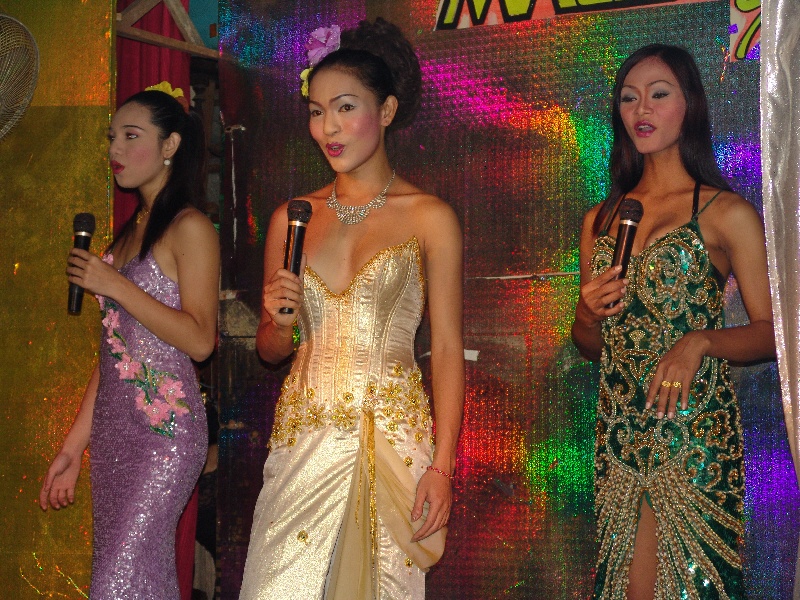Serena
Nanda's short book (only about 100 pages) is an excellent introduction to the
subject of "gender diversity". We get to know "berdaches"
among North American Indians, a caste of emasculated transvestites in India,
effeminate male transvestites and macho gay men in Thailand, and celibate women
living like men in Albania. There are also chapters on the Philippines,
Polynesia and the contemporary West. The section on the Western world is the shortest
one, presumably to emphasize that "gender variants" aren't uniquely
Western or modern. There are a few illustrations, including a photo of a
transvestite Crow Indian warrior named Finds Them And Kills Them. The book ends
with a bibliography and a list of movies about gender variants. I suspect
Serena Nanda's intended audience are freshmen anthropology students, but
"Gender Diversity" could be read by the general reader as well.
However, I also have some criticism of this book. Nanda claims that gender diversity proves that binary thinking (male/female) isn't universal. I beg to disagree. Most of the gender variants described in her book presuppose an already established binary opposition between "male" and "female". Why else would the most common gender variant be a male wearing women's clothing? Why are such persons expected to do traditional women's work? Why do they establish sexual relations with other men, who don't cross-dress and hence act as typical males? Obviously because the whole point of the gender variants is to reinforce the dichotomy between "male" and "female" identities. Indeed, the transvestites described in the book don't look like a "third" sex or gender, despite Nanda's analysis. Rather, they simply look like a combination of the two main genders, men and women. The group that comes closest to being an actual third sex are the male Hijras in India, who emasculate themselves and are supposed to live a celibate lifestyle. They are even organized as a special caste within Hindu society. But even the Hijras mimic and parody the mannerisms of women, showing that their status as a third category is relative. My guess is that gender variants emerge precisely because most societies think of "male" and "female" as opposites. Of course, such a rigid distinction is unnatural, due to individual human variation. There will always be men who act more "womanly" according to the cultural standards of their society, and women who act more "manly". The equally rigid categories of "male acting like a female" and "female acting like a male" are presumably established by society as a way of accommodating the deviants, and in more oppressive societies, to control them as well.
Nanda is probably right on another point, however. She believes that there is no direct connection between transvestite gender variants and homosexuality. True, the overt sexuality of the gender variants *is* homosexual, since a cross-dressing male is supposed to have a "normal" male partner. While this might tempt actual homosexuals to become cross-dressers, Nanda suspects that the homosexuality is effect rather than cause. A gender variant is supposed to have a relationship with a person who is (biologically) of the same sex. That's simply part of their social identity. Indeed, it might as well be the "normal" partner of the gender variant who is homosexual! Nanda points out that many societies in the past didn't condemn homosexual acts as such, nor did they consider "the homosexual" to be a separate category or identity. Rather, the distinction was between the "active" and "passive" sexual partner. "Active" male homosexuals were therefore seen as normal males, while "passive" male homosexuals were classified as women, and often regarded with even more contempt, since men are supposed to be "active". This means that "active" male homosexuals didn't need to join the transvestite "third gender". They could stay male. It was the "passive" partner who became part of the cross-dressing subculture. Apparently, this distinction still exists in modern Thailand, where self-described gay men emphasize their masculinity, and refuse any contact with the transvestite group known as kathoey.
As a good anthropologist, Nanda emphasizes the variation in gender roles in different cultures. But judging by her own book, the similarities are just as striking. All societies described in the book seem to have a strict dichotomy between "male" and "female", as already mentioned. This is true of both the patriarchal cultures (such as Brazil or Thailand) and the more complementarian cultures (the American Indians). In all these societies, cross-dressing is a marker of the alternative identity. In most of the American Indian cultures, the gender variant also took up the trade of the opposite sex (there were exceptions). In patriarchal societies, the male gender variants are usually prostitutes (even the supposedly ascetic Hijras often work as such) and there is a connection between their subcultures and the patriarchal distinction between "active" and "passive" homosexuality. Female gender variants are less well-known. In more complementarian societies, they seem to have sexual relations with "normal" women. In patriarchal societies, by contrast, they are supposed to be celibate, and their "male" status is somewhat shaky. Nanda describes a "sworn virgin" in an Albanian village, who lived as a man, since her parents lacked male off-spring. By becoming a "man", the sworn virgin could inherit the family property. Being socially a man in a male-dominated society did entail more freedom, but any sworn virgin who broke her vow of chastity could be stoned to death by the "normal" males!
It's curious that the author of this book can't see the forest for the trees...
Still, I recommend the book. It might encourage you to think in new ways about the issues of sexuality, homosexuality and transvestism.

No comments:
Post a Comment